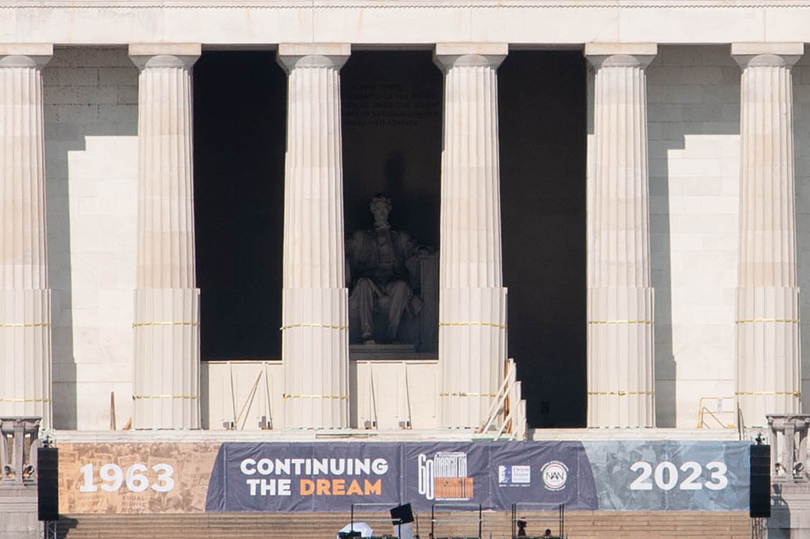August 26, 2023
If this was the continuation of the dream, wake me up now! After five hours of bloviated speeches and 90-degree heat, I tapped out and told an equally frustrated observer, “I don’t care what they have to say at this point.” Hearing speaker after speaker telling us how the arc of the moral universe bends toward justice was like a nail being pounded into our heads. The 60th Anniversary of the March on Washington for Jobs and Freedom was a disappointment to the memory of “the Bix Six”: A. Philip Randolph, Roy Wilkins, Dr. King, James Farmer, John Lewis, Whitney Young, and the 250,000 marchers who made history on August 28, 1963.
What was supposed to be a continuation, not a commemoration, turned out to be an over-glorified political rally. They rolled them all out from every corner of Capitol Hill and all the usual haunts. It was the “who’s who,” the “don’t know who’s,” and the “who really cares” speaking non-stop for 5 hours. This included a speech by actor and comedian Nick Cannon, who seemed baffled about why he was even speaking. Most rallies are like watching a concert: it builds a song at a time until it reaches that point where the audience feels they’ve gotten their money’s worth, and everything past that point is epic.
The program started with all the usual anticipation. Initially, the crowd was engaged and cheering “no justice, no peace” on cue with the first dozen or so speakers. However, by the fourth hour, the crowd was more engaged with what was happening in the audience than the podium; but they kept sending them out to speak a minute and a half at a time. It even became gameshow-like when a musical cue signaled the end of each speaker’s time. By then, every speech sounded like something, something arc of the moral universe. Something, something, sixty years ago…
Realizing they were losing the crowd, they pulled the ultimate con, announcing that “Martin Luther King’s family and Al Sharpton will be speaking after a few more speakers.” That perked up the waning crowd. So, when Marc Morial–President & CEO of The National Urban League–spoke, we all felt we had to be close! Nope…out marched another half dozen speakers., to which the announcer proclaimed, “Just a few more speakers…”
I was left to imagine what it must have felt like sixty years ago with the mall teeming with 250,00 people from all over the country, brought together for a single purpose. It must have been more like the Black Lives Matter marches of recent years, where the intensity, passion, and excitement filled every movement. At that moment, it dawned on me that every movement has its time. Every generation finds its voice. The role of elders is to help them find it, but not dictate or mandate they follow a past remedy.
The torch always has to be passed to the next generation. While gathering on the Washington Mall to commemorate a historic moment in time is a novel concept, it should be put in its proper context. The United States is a tinder box set to explode. How and when that explosion takes place is anyone’s guess. Will it erupt like it did in 1963 during the Watts riots, or in 1968 after the death of Martin Luther King? Will it take on the form of the Black Lives Matter movement or be more subtle? Will it take the death of another Black person to spark it, or will it erupt from the sheer exhaustion of generations of fighting?
All of this echoed in my head as I took the fifteen-minute walk to my car, hearing the speeches fade in the background. Walking through the crowd, clearly beaten down by the heat and endless speeches, it was clear this was a long way from the 3-hour event 60 years ago that sparked a movement. As I cranked up the AC and pulled out of the parking lot, I asked a group of marchers coming my way, “Are they still talking?” They all sighed, shaking their heads and giving a disappointed laugh.
So, no–today wasn’t the continuation of a dream. It wasn’t even a good re-enactment of a dream that lives in our hearts and spirit and can never be vanquished. It’s a dream that stands in its own moment in time. Like all great movements in history, it becomes the stepping stone for future events that take their own shape and direction. And although you can stand in the same place where history was made, history usually is only made there once.


